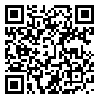BibTeX | RIS | EndNote | Medlars | ProCite | Reference Manager | RefWorks
Send citation to:
URL: http://tkj.ssu.ac.ir/article-1-720-en.html

 , Alireza Fallah
, Alireza Fallah 
 , Fereidoun Laal
, Fereidoun Laal 
 , Vali Sarsangi
, Vali Sarsangi 
 , Rouhollah Fallahmedvari *
, Rouhollah Fallahmedvari * 

Introduction: The latest way to control the use of hearing protection devices is sound. The amount of time spent on the phone by workers is one of the most important parameters in hearing conservation programs. The aim of the study is to evaluate the effectiveness of training scenario in theoretical and practical ways to increase using the hearing protection devices for workers.
Materials and methods: In this experimental study, according to the results of the initial stage of the questionnaire, in the experimental group (n= 50) for 5 sessions (practical theory), each shown for 30 to 45 minutes, and workers in the control group (n= 50) in this study have not received any training, and time spent on the phone before and 3 months after intervention in both groups were recorded and compared.
Results: The results show that before intervention only 1 worker (2%) used the device for all time and after intervention 33 workers (66%), which reflect positive effect of training intervention on using the devices. All the conditions were the same for two groups the control group did not reflect significant changes due to lack of training program.
Conclusion: According to the findings, it can be said that the training scenario has been successful in increasing the use of hearing protection devices and also can be used in other health interventions.
Received: 2016/01/2 | Accepted: 2016/10/31 | Published: 2017/04/29
| Rights and permissions | |
 |
This work is licensed under a Creative Commons Attribution-NonCommercial 4.0 International License. |



